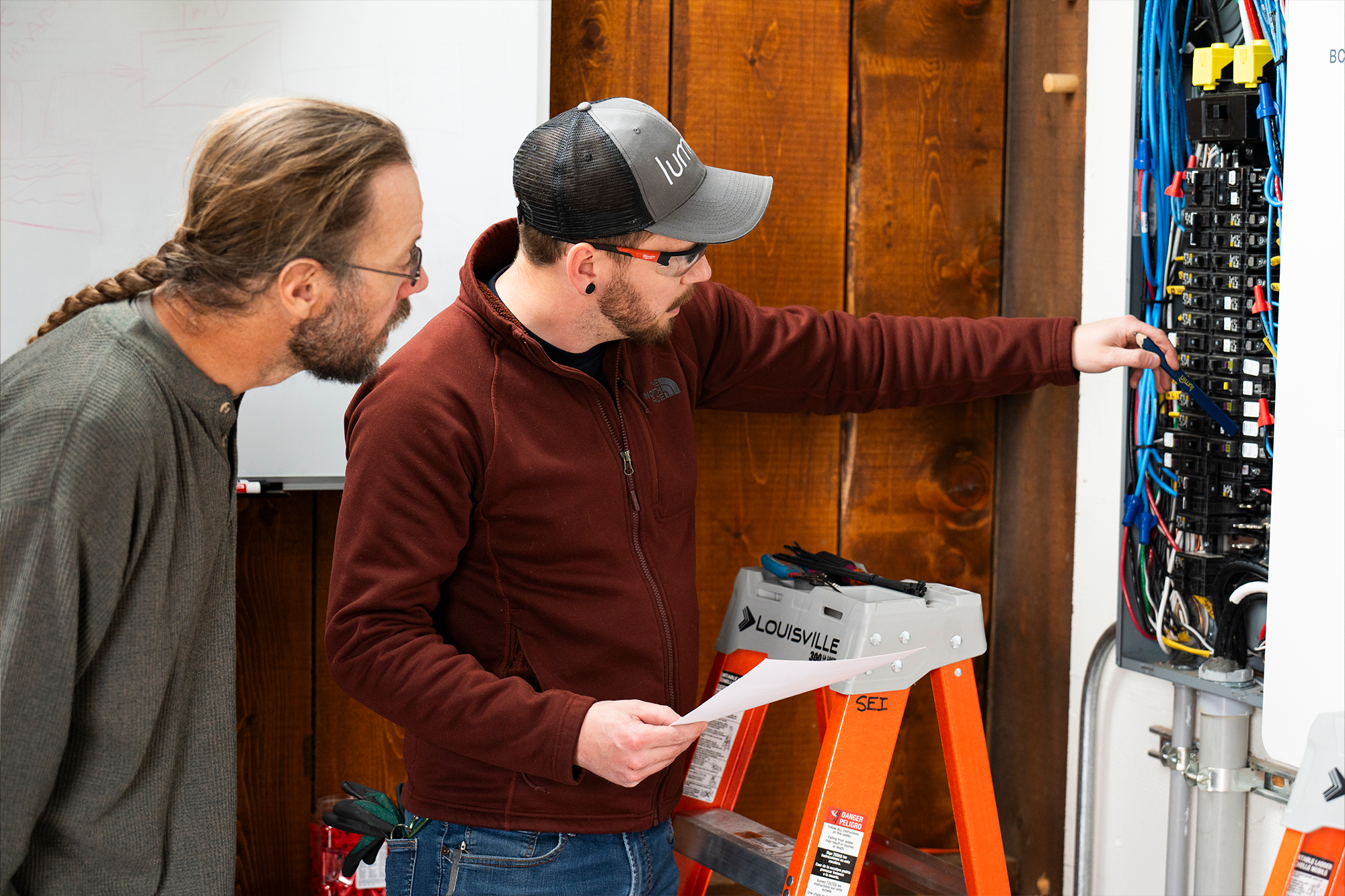We use cookies on our website.
Some of them are necessary for the functioning of the site, but you can decide about others.

Interest in electrification has become a hot topic in recent years, fueled by growing environmental awareness and landmark policies like the Inflation Reduction Act. This movement aims to replace gas-powered vehicles and appliances with cleaner, more efficient electric alternatives, offering significant potential to reduce carbon emissions. While it represents a critical step in addressing climate change, it also comes with challenges—chief among them is the need to upgrade our electrical infrastructure to support rising demand.
This challenge is especially relevant for homeowners looking to adopt modern technologies, like EV chargers, which require substantial energy. Every home has a fixed electric capacity, typically ranging from 60 to 400 amps, with most homes falling between 100 and 200 amps. Homes with lower capacity often can’t support newer electric technologies without an electrical service upgrade from the utility. It’s estimated that 48 million homes in the U.S. would need more electric capacity to fully transition to electric appliances. So, what’s the solution?
There are a few options for increasing your home’s electrical capacity, some of which are costly. Performing an electrical panel upgrade is the most common solution. If you’ve ever tried to add a new EV charger, install solar power or even build a new pool, you may have been told this upgrade was required before any work could begin. An electrical panel upgrade replaces your home’s existing panel with a newer, higher-capacity version to handle the additional electrical demand.
Installing a new electrical panel (also known as a load center, service panel or breaker box) requires a licensed electrician. It can become costly, depending on what steps are needed. In some cases, you may need to run new wiring underground or upgrade utility infrastructure, such as a transformer, which can add thousands of dollars to the cost. Your utility may also charge you an additional fee to send more power to your home. This process typically involves coordination with your local utility under their timeline, and your electrician will guide you through it. Depending on the utility’s workload and the upgrades necessary, the project can take anywhere from one day to a year to complete.
Main service panel upgrades involve multiple considerations—from cost to utility timelines—and it’s not always a smooth ride. Fortunately, there are ways homeowners can avoid these upgrades altogether. Below, we explore three effective tips to help you get more out of your existing electrical capacity without overhauling your panel.
1. Improve your home’s energy efficiency
Improving your home’s energy efficiency is a practical way to reduce electrical demand and avoid a service panel upgrade. This includes upgrading outdated appliances for more energy-efficient models, such as replacing a 20-year-old electric HVAC unit with a modern heat pump. These upgrades can help free up electrical capacity. Multiple appliances may need to be upgraded to add significant capacity, which can be costly.
In addition to appliances, weatherizing your home can make a big difference. Enhancing insulation, sealing air leaks and upgrading windows improve heating and cooling efficiency and further reduce your overall energy demand. While you may need to implement these upgrades over time, they often have a significant impact on utility bills and overall comfort, making the investment worthwhile.
2. Reassess your home’s load calculation
A load calculation, typically performed by an electrician, determines your home’s electrical capacity by estimating energy needs based on your appliances and the home’s size. However, traditional load calculations can sometimes overestimate demand, leading to unnecessary panel upgrades.
Fortunately, the National Electric Code now allows alternative calculation methods that use historical energy usage data for more accurate calculations. By downloading your utility’s historical data and consulting with your electrician, you may find that your home’s capacity is sufficient without requiring an upgrade. This simple step could save you time and money.
3. Use an energy management system
We’re a bit biased here, but when it comes to avoiding a costly service panel upgrade, energy management systems (EMS) offer an accessible solution that provides insight and control over your energy use. The Lumin Smart Panel is an intelligent load management platform that eliminates the need for a costly panel replacement or utility service upgrade. It is universally compatible, retrofitting to any service panel for a seamless installation process.
The Lumin Smart Panel uses intelligent load management to continuously monitor and automatically balance your home’s electrical capacity, enabling the addition of high-demand appliances like EV chargers, heat pumps and induction stoves—without requiring costly upgrades. Through the Lumin Energy App, you gain real-time visibility into energy use, control over individual circuits and the ability to schedule loads for optimal efficiency. This seamless, automated solution empowers you to electrify confidently.
The first two tips for avoiding a service panel upgrade are effective and important steps on your electrification journey. However, if you’re looking for a comprehensive, futureproof solution that gives you control and visibility over your home energy, we recommend the Lumin Smart Panel.
Ready to learn more? Contact our sales team to schedule a demo and see how it can work for your home.
Editor's Note: In January of 2025, Lumin was acquired by ABB, a global leader in electrification and automation. Subsequently, the Lumin Smart Panel was re-introduced to the market as the ReliaHome™ Smart Panel.